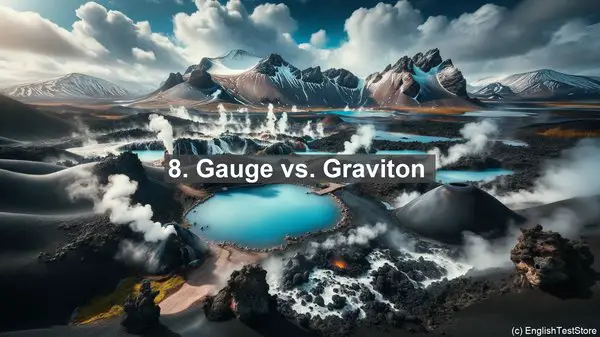Introduction
Today, we’re going to delve into the fascinating world of High Energy Physics. But before we dive in, it’s important to address some commonly confused words that often trip us up. Understanding these distinctions will not only improve our communication but also prevent any misunderstandings. So, let’s get started!

1. Particle vs. Antiparticle
One of the fundamental concepts in High Energy Physics is the distinction between particles and antiparticles. While both have the same mass, their charge is opposite. For example, an electron has a negative charge, but its antiparticle, the positron, has a positive charge. Understanding this difference is crucial in various areas, such as particle colliders and particle interactions.
2. Energy vs. Momentum
Energy and momentum are often used interchangeably, but they have distinct meanings. Energy refers to the capacity to do work, while momentum is the product of an object’s mass and velocity. In High Energy Physics, both are crucial, but they serve different purposes. Energy helps us understand the stability and behavior of particles, while momentum is vital for studying their motion and interactions.
3. Mass vs. Weight
Mass and weight are related but not the same. Mass is an intrinsic property of an object, representing the amount of matter it contains. On the other hand, weight is the force exerted on an object due to gravity. In High Energy Physics, mass is often used to describe particles, while weight is more relevant in gravitational interactions.
4. Decay vs. Annihilation
Decay and annihilation are two processes that involve the transformation of particles. Decay occurs when a particle spontaneously transforms into other particles, often due to its instability. Annihilation, on the other hand, is the process where a particle and its antiparticle collide, resulting in their mutual destruction. Both processes are essential in understanding the lifespan and behavior of particles.

5. Boson vs. Fermion
Bosons and fermions are two types of particles with distinct characteristics. Bosons have integer spin, while fermions have half-integer spin. This difference in spin leads to various properties, such as the Pauli exclusion principle for fermions and the ability of bosons to occupy the same quantum state. Understanding these distinctions is crucial in areas like quantum mechanics and the study of fundamental forces.
6. Neutrino vs. Neutron
Neutrinos and neutrons are often confused due to their similar names, but they are entirely different particles. Neutrinos are elementary particles with no charge and extremely low mass. They are often produced in nuclear reactions and have intriguing properties, such as oscillation. Neutrons, on the other hand, are composite particles found in atomic nuclei and play a crucial role in nuclear reactions.
7. Quantum vs. Classical
Quantum and classical are two distinct realms in physics. Classical physics describes the macroscopic world, where objects follow deterministic laws. Quantum physics, on the other hand, deals with the microscopic world, where particles exhibit wave-particle duality and uncertainty. In High Energy Physics, both realms are essential, with classical physics often providing an approximation for large-scale phenomena.
8. Gauge vs. Graviton
Gauge bosons and gravitons are both particles associated with fundamental forces. Gauge bosons, such as photons, mediate the strong, weak, and electromagnetic forces. Gravitons, on the other hand, are hypothetical particles that are postulated to mediate the force of gravity. While gauge bosons have been observed, gravitons are yet to be directly detected, making them an intriguing area of research.
9. Synchrotron vs. Cyclotron
Synchrotrons and cyclotrons are types of particle accelerators. Cyclotrons use a constant magnetic field to accelerate particles in a circular path, while synchrotrons use varying magnetic fields to keep particles in a stable orbit. Synchrotrons are often preferred for high-energy experiments due to their ability to accelerate particles to higher energies. Both types of accelerators have revolutionized High Energy Physics.
10. Dark Matter vs. Dark Energy
Dark matter and dark energy are two mysterious components that make up a significant portion of the universe. Dark matter is a form of matter that does not interact with light, while dark energy is a hypothetical form of energy that is responsible for the accelerated expansion of the universe. Understanding these concepts is crucial in unraveling the mysteries of the cosmos.
